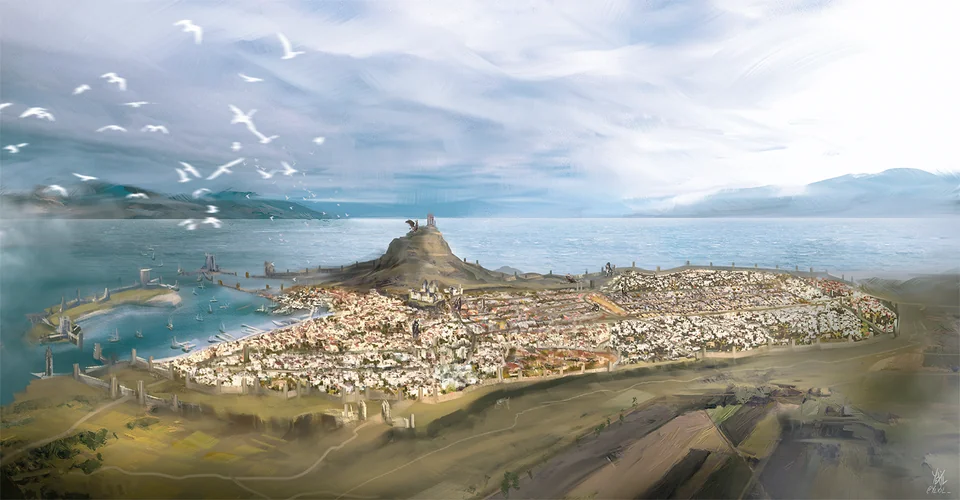Bedine (bed-EYE-n)
Dark-skinned and dark-haired, the Bedine are warriors and nomads in southern Anauroch. Divided into over a hundred tribes, the clannish Bedine mostly keep to their desert lands and interact little with outsiders, except for trading. Over the generations, more Bedine have become city dwellers, leaving behind their nomadic ways, and reducing the number of tribes that still espouse their traditional way of life.
Naming Traditions
Feminine names
Aisha, Farah, Nura, Rashida, Zalebyeh
Masculine names
Aali, Rashid, Tahnon, Tanzim, Whalide
Family names
Alaii, Bordjia, Clelarra, Desai, Dakawa, Dursalai, Goldor, Iriphawa, Kellordrai, Lalajar, Qahtan, Yethtai, Zazalaar
Other names
Any name that is Arabic in origin; particularly Persian/Iranian
Culture
Major language groups and dialects
The Bedine speak a dialect of Midani, the language of Zakhara, a dialect known as Uloushinn by some scholars, although the Bedine themselves do not have a word for their own language. They use the Thorass alphabet but are often illiterate.
Bedine do not use surnames. If necessary, patronyms ("son of…") and andronyms ("wife of…") are sometimes used. Alternatively, the suffixes "the Young" or "the Old" might be added
Shared customary codes and values
- Honour for one's family and tribe.
- Use whatever means to survive.
- Freedom; a warrior would rather die than be enslaved.
- Magic is dishonourable and should be feared.
- The Desert is their home and they have no need to leave it.
Common Dress code
Some clothing plays a symbolic role in Bedine culture. Most Bedine men and women wear keffiyeh, or kufiya, scarves on their heads. These are usually white to soak up as little heat as possible and are worn when outside. An igal, a browband, holds the keffiyeh on the head and indicates a person's status and tribe; it can be made of camel hair and precious gems.
A type of loose, sleeveless robe called an aba, which protects from the sun's rays, is worn by both men and women, but some men have deviated from this traditional style and wear loose shirts and vests instead. A dark Jellaba is worn over the aba at night, to provide warmth.
The women of Bedine tribes are covered from head to ankle with even veiled faces in public. Only their hands, feet, and eyes were visible. They wear their veils upon reaching child-bearing age and sometimes earlier.
Among precious stones, Sanidine is admired by the Bedine.
Ideals
Beauty Ideals
Some clothing plays a symbolic role in Bedine culture. Most Bedine men and women wear keffiyeh, or kufiya, scarves on their heads. These are usually white to soak up as little heat as possible and are worn when outside. An igal, a browband, holds the keffiyeh on the head and indicates a person's status and tribe; it can be made of camel hair and precious gems.
A type of loose, sleeveless robe called an aba, which protects from the suns rays, is worn by both men and women, but some men have deviated from this traditional style and wear loose shirts and vests instead. A dark Jellaba is worn over the aba at night, to provide warmth.
The women of Bedine tribes are covered from head to ankle with even veiled faces in public. Only their hands, feet, and eyes are visible. They wear their veils upon reaching child-bearing age and sometimes earlier.
Among precious stones, Sanidine is admired by the Bedine.




